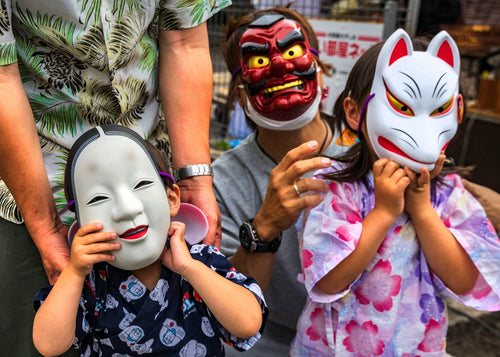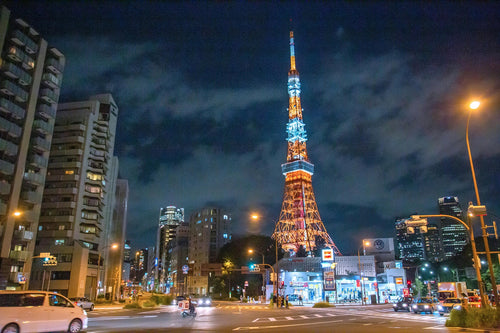
Active Adventure in Japan: 5 Best Hiking Trails
Japan’s breathtaking landscapes offer a vast array of hiking opportunities, from lush forests and towering volcanoes to sacred mountains and remote coastal paths. Whether you’re a seasoned mountaineer or a casual hiker, Japan has trails that cater to all skill levels and allow you to experience the country’s rich natural beauty and cultural heritage. Here’s a guide to five of the best hiking trails in Japan, each offering unique experiences and unforgettable views.
Contents
1. Kumano Kodo (Wakayama Prefecture)
2. Mount Fuji (Yamanashi and Shizuoka Prefectures)
3. Daisetsuzan National Park (Hokkaido)
4. Yakushima Island (Kagoshima Prefecture)
5. Nakasendo Trail (Kiso Valley, Nagano and Gifu Prefectures)
1. Kumano Kodo (Wakayama Prefecture)
The Kumano Kodo is a network of ancient pilgrimage routes that traverse the Kii Peninsula, leading to the revered Kumano Sanzan, or the Three Grand Shrines of Kumano. This UNESCO World Heritage Site has been a place of spiritual importance for over a thousand years, attracting pilgrims seeking blessings and a closer connection to nature. Today, hikers come for both the trail's cultural significance and the beauty of the rugged terrain.
Trail Highlights: The Kumano Kodo encompasses several routes, but the Nakahechi Route is the most popular among travelers. Along the way, hikers encounter atmospheric forests, ancient stone paths, and views of mist-shrouded mountains. Key points of interest include the Grand Shrines of Hongu Taisha, Nachi Taisha (next to the beautiful Nachi Waterfall), and Hayatama Taisha, as well as numerous smaller shrines, teahouses, and tranquil villages.
Difficulty: Moderate – Most sections of the Kumano Kodo are accessible to intermediate hikers, though some routes can be challenging with steep climbs. The well-marked paths make navigation easy for solo travelers.
Best Time to Visit: Spring (March to May) and Autumn (September to November) are ideal, offering pleasant weather and fewer crowds. Cherry blossoms in spring and vibrant autumn foliage add extra beauty to the pilgrimage.
2. Mount Fuji (Yamanashi and Shizuoka Prefectures)
Mount Fuji, Japan’s highest peak and a cultural icon, offers one of the country’s most iconic hiking experiences. The volcanic mountain stands 3,776 meters (12,389 feet) tall and is a place of pilgrimage and inspiration for centuries. Scaling this peak provides a challenge and rewards hikers with views that stretch for miles across the landscape. While the climb is steep, the allure of standing atop Japan’s most famous mountain attracts hikers worldwide.
Trail Highlights: There are four main trails leading to Mount Fuji’s summit: the Yoshida, Subashiri, Gotemba, and Fujinomiya routes. The Yoshida Trail is the most popular due to its well-maintained paths and numerous facilities, including mountain huts and rest areas. Reaching the summit at sunrise is a popular experience, known as “Goraiko,” symbolizing the mountain’s sacred status.
Difficulty: Challenging – While no technical climbing skills are needed, the ascent requires physical stamina, especially as the higher altitude and thinner air can make the climb demanding. Many hikers prepare for altitude sickness and cold weather, especially during the night climbs.
Best Time to Visit: The official climbing season is from early July to early September. During this time, the mountain is free from snow, and all facilities are open. The early morning hours are the most popular, as climbers often aim to reach the summit by sunrise.
3. Daisetsuzan National Park (Hokkaido)
For those looking to immerse themselves in Japan’s unspoiled wilderness, Daisetsuzan National Park in Hokkaido is a prime destination. This expansive park is home to towering volcanic peaks, alpine meadows, and untouched forests, offering a sense of solitude and serenity that’s rare in many other parts of the country. Known as “the playground of the gods,” Daisetsuzan is the largest national park in Japan and boasts some of the most challenging and rewarding trails.
Trail Highlights: One of the most popular trails is the Asahidake Trail, leading up to Mount Asahidake, the highest peak in Hokkaido at 2,291 meters (7,516 feet). The ascent is accessible from the Asahidake Ropeway, which offers a stunning aerial view of the mountains and nearby sulfur springs. Hikers are treated to vibrant alpine flowers in summer and fiery autumn foliage as the seasons change. The Kurodake Trail is another popular hike that provides breathtaking views of the park's valleys and rivers.
Difficulty: Moderate to Difficult – While trails like Asahidake are manageable for moderately experienced hikers, some paths in the park are long and require more preparation. Snow can remain in higher elevations well into summer, adding to the difficulty.
Best Time to Visit: June through October is the best period for hiking, with July and August being peak flower season. Autumn, from late September to early October, offers unparalleled displays of fall foliage.
4. Yakushima Island (Kagoshima Prefecture)
Yakushima, a small island off the coast of Kagoshima in southern Japan, is a UNESCO World Heritage Site known for its ancient cedar trees, lush rainforest, and misty, almost mystical landscape. The island’s hiking trails lead adventurers through some of Japan’s oldest forests, with trees that are thousands of years old. Hiking here is not only a physical journey but also a chance to experience an otherworldly environment filled with rich biodiversity.
Trail Highlights: The most famous hike on Yakushima is the trail to Jomon Sugi, a giant cedar estimated to be over 7,000 years old and the oldest known tree in Japan. Other popular trails include the Shiratani Unsuikyo Ravine, with moss-covered rocks and pristine streams, and the Arakawa Trail, which winds through the heart of the island’s ancient forest. Yakushima’s forests served as the inspiration for Studio Ghibli’s *Princess Mononoke*, adding a touch of magic to the adventure.
Difficulty: Moderate to Difficult – The trails range from short, scenic paths to challenging full-day hikes that require stamina and careful navigation. Due to Yakushima’s high rainfall, hikers should be prepared for slippery terrain and possible rain at any time of year.
Best Time to Visit: Spring (March to May) and Fall (September to November) offer the best hiking conditions, with moderate temperatures and lower rainfall. Summers can be humid, while winter trails may be covered in snow, especially at higher elevations.
5. Nakasendo Trail (Kiso Valley, Nagano and Gifu Prefectures)
The Nakasendo Trail is a historic route that once connected Edo (modern-day Tokyo) with Kyoto during the Edo period. Today, it offers hikers a journey through time, winding through beautifully preserved post towns, quiet mountain paths, and scenic river valleys. Walking the Nakasendo provides a glimpse into Japan’s past and the rural charm that is often lost in the fast-paced modern cities.
Trail Highlights: The most popular section of the Nakasendo runs between the post towns of Magome and Tsumago, with the well-preserved Edo-era architecture creating an authentic historical atmosphere. Along the way, hikers can stop at small teahouses, pass traditional wooden inns, and enjoy views of rice fields, cedar forests, and mountains. The route also features markers and signposts that add context to the trail’s historical significance.
Difficulty: Easy to Moderate – The trail between Magome and Tsumago is a relatively gentle path, suitable for beginners and families. There are occasional inclines, but overall the trail is easy to follow, with signs in both Japanese and English.
Best Time to Visit: Spring and autumn are ideal for enjoying the trail’s natural beauty and mild weather. Cherry blossoms in spring and autumn foliage in late October to early November add extra charm to this historic hike.
Each of these trails showcases the diversity and beauty of Japan’s natural landscapes, allowing hikers to experience not only scenic beauty but also the deep cultural significance embedded in these paths. From the spiritual pilgrimage routes of the Kumano Kodo to the volcanic peaks of Daisetsuzan and the mythical forests of Yakushima, Japan offers unique adventures that blend nature with history, providing unforgettable experiences for adventurers and nature lovers alike.
Share
You may also like
-

10 Traditional Japanese Festivals (Matsuri) You Can’t Miss
Japanese festivals, or *matsuri*, are vibrant celebrations of cultural heritage, featuring elaborate costumes, l...
-

Roppongi Art and Nightlife Guide
Roppongi is one of Tokyo’s most vibrant districts, known for its lively nightlife, sophisticated art scene, and ...
-

Etiquette Essentials for Visitors to Japan
Japan’s culture is rich in respect, politeness, and consideration, making etiquette an essential part of daily l...
-

Japan’s Kimono Heritage: Symbolism, Style, and Where to See
The kimono, Japan’s traditional garment, is a beautiful and symbolic representation of Japanese culture. From its int...
There are currently no related posts.




